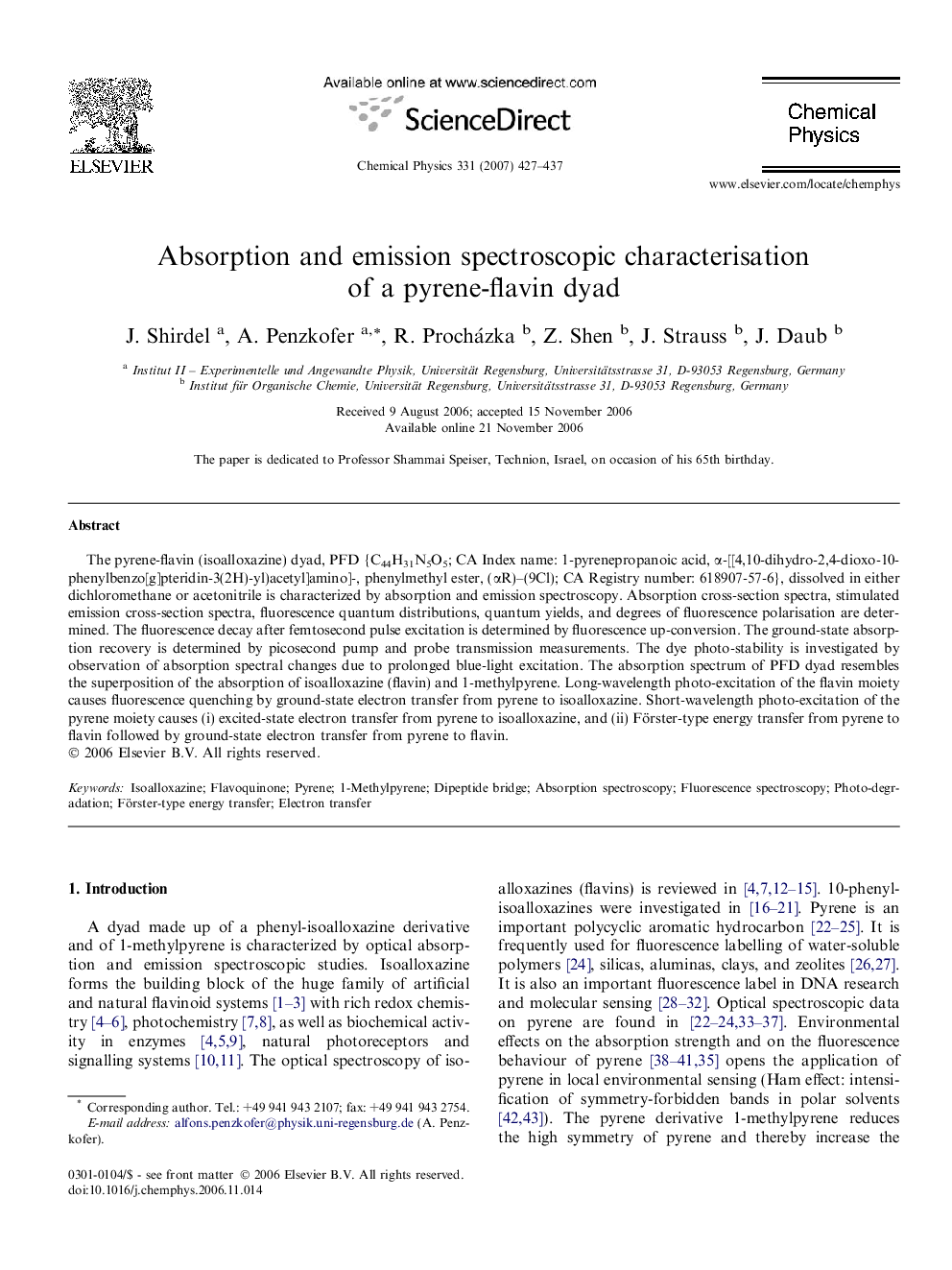| Article ID | Journal | Published Year | Pages | File Type |
|---|---|---|---|---|
| 5376583 | Chemical Physics | 2007 | 11 Pages |
Abstract
The pyrene-flavin (isoalloxazine) dyad, PFD {C44H31N5O5; CA Index name: 1-pyrenepropanoic acid, α-[[4,10-dihydro-2,4-dioxo-10-phenylbenzo[g]pteridin-3(2H)-yl)acetyl]amino]-, phenylmethyl ester, (αR)-(9Cl); CA Registry number: 618907-57-6}, dissolved in either dichloromethane or acetonitrile is characterized by absorption and emission spectroscopy. Absorption cross-section spectra, stimulated emission cross-section spectra, fluorescence quantum distributions, quantum yields, and degrees of fluorescence polarisation are determined. The fluorescence decay after femtosecond pulse excitation is determined by fluorescence up-conversion. The ground-state absorption recovery is determined by picosecond pump and probe transmission measurements. The dye photo-stability is investigated by observation of absorption spectral changes due to prolonged blue-light excitation. The absorption spectrum of PFD dyad resembles the superposition of the absorption of isoalloxazine (flavin) and 1-methylpyrene. Long-wavelength photo-excitation of the flavin moiety causes fluorescence quenching by ground-state electron transfer from pyrene to isoalloxazine. Short-wavelength photo-excitation of the pyrene moiety causes (i) excited-state electron transfer from pyrene to isoalloxazine, and (ii) Förster-type energy transfer from pyrene to flavin followed by ground-state electron transfer from pyrene to flavin.
Keywords
Related Topics
Physical Sciences and Engineering
Chemistry
Physical and Theoretical Chemistry
Authors
J. Shirdel, A. Penzkofer, R. Procházka, Z. Shen, J. Strauss, J. Daub,
